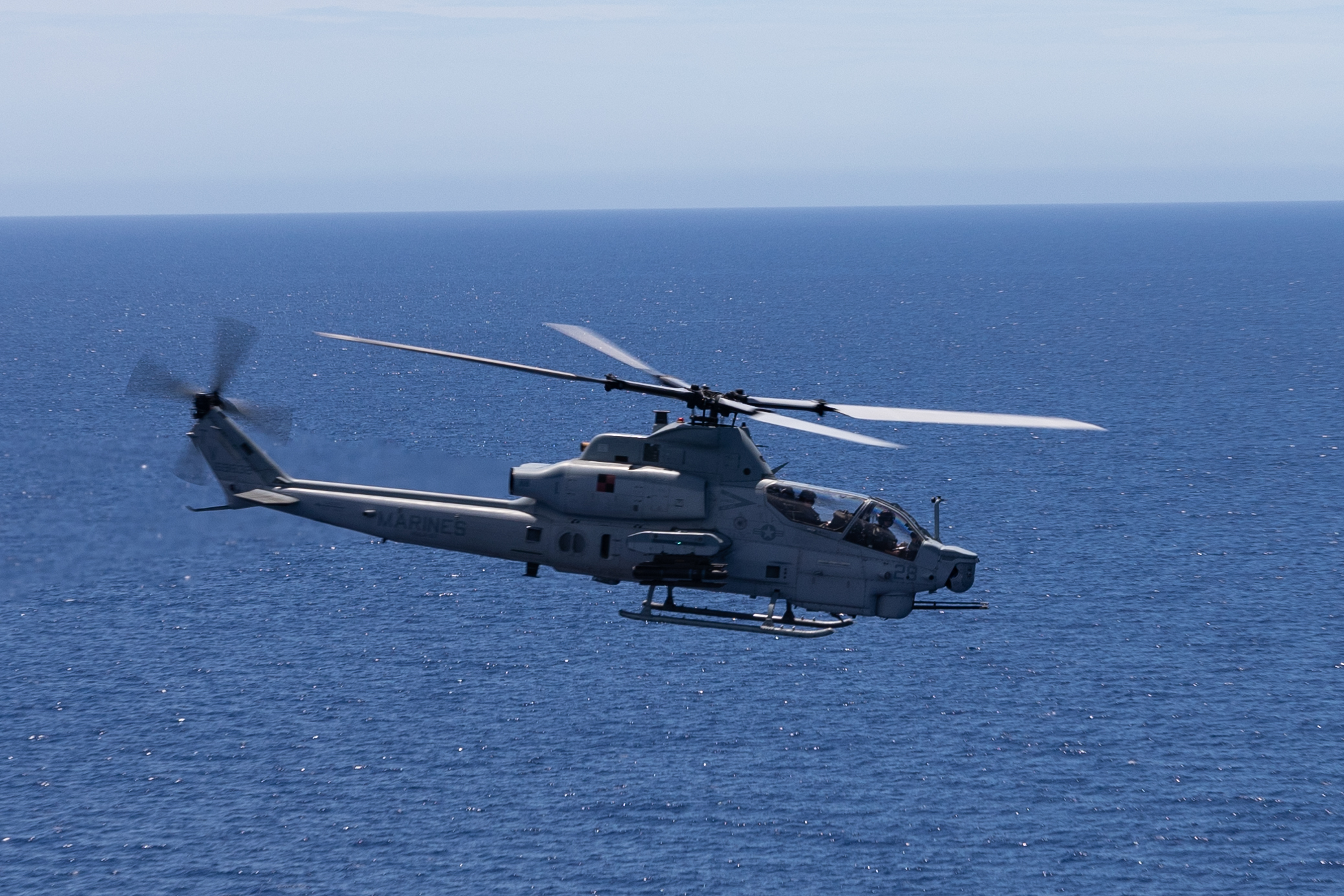By Robbin Laird
In an increasingly complex and contested battlefield environment, the U.S. Marine Corps is adapting its aviation support strategy to meet emerging challenges.
Captain Medlen, an eight-year Marine Corps veteran currently commanding the Engineers Company of Marine Wing Support Squadron (MWSS) 272, provided valuable insights into how distributed aviation operations are evolving based on recent deployment experiences.
I met with Captain Medlen at his office in New River on 30 April 2024 to discuss the approach and the recent exercise in the Bahamas.
From Centralized to Distributed: A New Operational Paradigm
“We need to shift towards single touch points with different things,” explains Captain Medlen, contrasting the old model with what’s needed for future conflicts.
“We think of old school FARPs [Forward Arming and Refueling Points] in Afghanistan and Iraq as large FOB [Forward Operating Base] style, Walmart supercenters with everything under one roof. We need to start looking at Mom and Pop type stores – this place has gas, this place has ordnance, this place has somewhere to sleep.”
This distributed approach stems from a fundamental warfighting concern: survivability.
As potential adversaries develop increasingly sophisticated targeting capabilities, centralizing resources creates vulnerable nodes that can be easily compromised.
By distributing capabilities across multiple smaller sites, the Marines create a more resilient network of mission critical assets and personnel.
“If I lose one of maybe 20 parking spots, that’s not the end of the world,” Medlen notes.
“You can hurt a small part of us, but not necessarily destroy the body.”
The Bahamas Deployment: Testing the Concept
MWSS 272 recently deployed to the Bahamas to test these concepts in a real-world environment.
Using New River/Camp Lejeune as their primary staging area (Echelon 4), they established a command-and-control outpost at the U.S. Navy’s Atlantic Undersea Test and Evaluation Center (AUTEC) on Andros Island (Echelon 5).
From there, they pushed teams to uninhabited islands with little to no available infrastructure in place.
The deployment demonstrated the squadron’s ability to create rapidly operating locations from scratch.
At “Site Four,” combat engineers and heavy equipment operators removed 30-40 foot trees and transformed the area into a functional two-point landing zone in just under one week.
At “Site Three,” they executed a proof-of-concept operation using only hand tools and chainsaws to create a single-point landing zone.
Critically, these sites served different purposes.
While one might provide fuel, another might offer overnight maintenance capabilities.
This approach creates operational flexibility while complicating enemy targeting efforts.
Self-Sustainability in Contested Environments
A key component of distributed aviation operations is self-sustainability. Captain Medlen highlights how the Marine Aircraft Wing (MAW) can support itself in littoral environments.
“We can make potable water from seawater at the main AUTEC installation, package it, put it on a CH-53, add some boxes of chow and a little bit of ordnance.
“When they go get gas somewhere, they drop all that stuff off. Now we have self-supporting sustainment internal to Second MAW.”
This capability for aerial resupply enables Marines to maintain a distributed posture without relying on vulnerable ground logistics chains or large fixed bases.
Challenges and Future Development
Despite promising progress, several challenges remain.
Captain Medlen identifies command and control integration between ground and air elements as a significant hurdle, noting that many Marines, including himself, are experiencing their first assignment in aviation units.
“Being able to bridge the gap in what we understand as C2 from the ground side, and the C2 capabilities that the aircraft and the pilots are familiar with, and being able to make it more cohesive and reduce uncertainty is something that we’re working on getting more proficient at,” he explains.
The recent introduction of Marine Air-Ground Tablets (MAGTABs) (digital tablets for sharing operational information) has improved this situation, allowing pilots to quickly access information about distributed sites, including available resources, munitions types, and fuel quantities.
Another critical challenge is deploying ground support elements. Unlike aviation units that can self-deploy, ground support elements require transportation. Medlen emphasizes the need to “integrate early and often with the flying squadrons” to ensure ground capabilities arrive where needed.
Perhaps most significantly, Medlen identifies distributed medical support as imperative for future conflicts. During the Bahamas deployment, rehearsals and clearly established medical capabilities proved to be instrumental in ensuring that combat readiness was maintained.
“Do we have general consolidation points for routine casualties? Somewhere else for surgical capabilities? Another area for imagery?” Medlen asks, pointing out that distributing medical assets prevents the enemy from targeting a single medical facility, which could have devastating psychological impacts on forces.
Looking Forward
The experience in the Bahamas demonstrated that a Marine Wing Support Squadron could rapidly establish multiple landing zones in austere environments, creating a distributed network of capabilities that enhances operational reach while minimizing vulnerability.
Captain Medlen envisions continuing this approach in future operations: “If we’re there for a longer time, I’m not creating two landing zones. I’m creating as many as possible throughout the operational area.”
This distributed aviation operations concept represents a significant shift from recent conflicts characterized by large, established bases.
By adapting to more distributed postures, the Marine Corps aims to maintain operational effectiveness while reducing vulnerability in contested environments where precision munitions could quickly compromise centralized facilities.
As Captain Medlen notes, this approach creates “standoff” and “uncertainty for the enemy” – essential elements of advantage in future conflicts.
Featured image: A U.S. Marine Corps AH-1Z Viper with Marine Light Attack Helicopter Squadron (HMLA) 167, flies near Andros Island, Bahamas, June 7, 2024. HMLA-167 conducted close air support training in support of Distributed Aviation Operations Exercise 24, which is designed to distribute command and control of aviation forces across echelons of command, pushing authorities to the lowest levels, while keeping forces moving between airfields and air sites. (U.S. Marine Corps photo by Lance Cpl. Anakin Smith)


